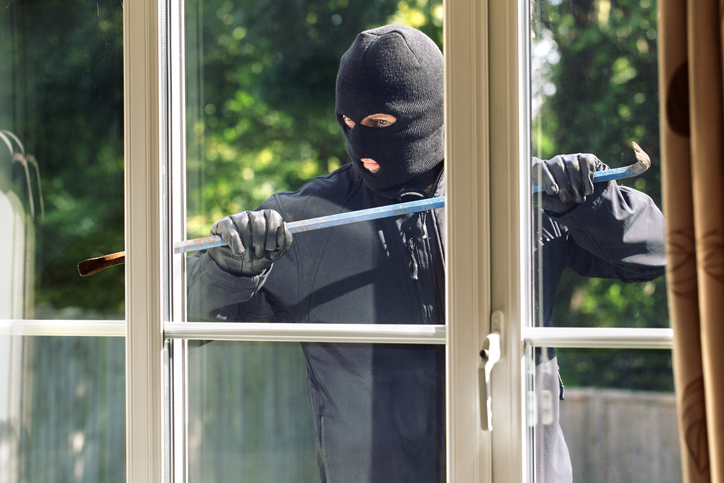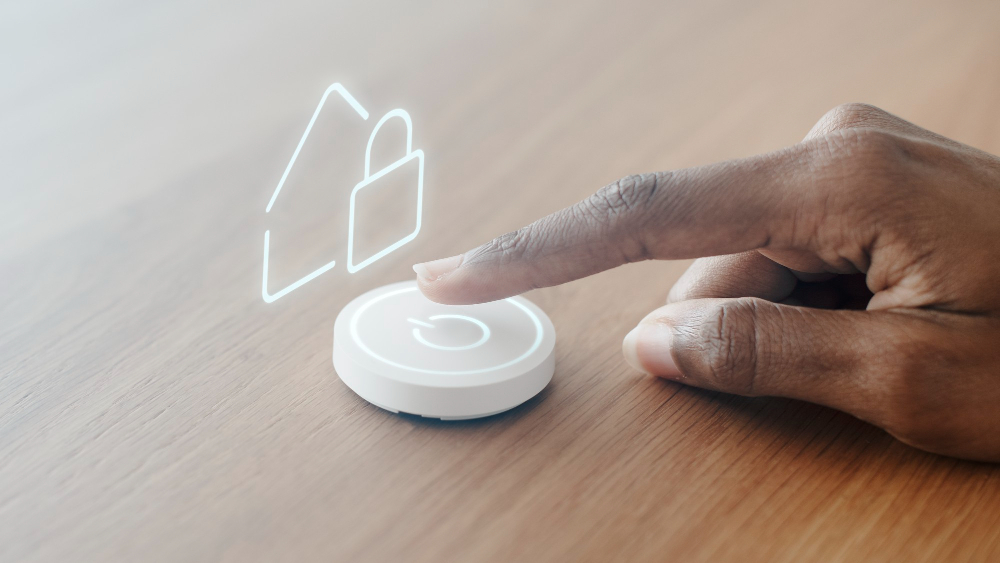There comes a time in every person’s life when they think about how scary it would be to experience a home invasion. This risk is a fact of life for most of us, which is why so many Americans focus their attention on home security to protect their family, their belongings, and hopefully to deter criminals from burglary in the first place.
Table of contents
- Quick stats
- How to burglar-proof your home
- Smart security solutions
- Traditional security solutions
- Outdoor security solutions
- What happens if a burglar breaks into my house?
Quick stats
- Most home burglaries take place between 10 am and 3 pm and last only eight to 10 minutes. Most of us are prone at some point to leave for a quick errand and think, “I’ll only be gone for 15 minutes; I’ll just leave the door unlocked.” – this stat puts that in a new context. A burglar could be long gone by the time you return from even a quick trip to CVS.
- 51% of home burglaries are repeated within six weeks. This is because well-educated burglars know that six weeks is the average window that it takes to process an insurance claim and replace stolen property. They return to steal the newly replaced items and whatever else they may not have seen during their first burglary.
- 65% of burglars are already well-acquainted with the people they rob. This level of ‘acquaintance’ shouldn’t be taken in the same context as we would consider a friend that we are ‘well-acquainted with, so don’t worry. What that means, in this case, is that 65% of burglars have some knowledge of your home and habits. This could be because they mined your social media for patterns, or they work at your local grocery store and happen to notice when you commonly stop for groceries.
- Despite that only 17% of US homes have a security system, burglars are three times more likely to target properties that don’t use a security system. That means that 83% of US homes are three times more vulnerable to burglaries than the other 17% with home security systems.
- New Hampshire has the lowest burglary rate, with 136.2 burglaries per 100,000 people.
- New Mexico has the highest burglary rate, with 787.6 burglaries per 100,000 people.
- According to the FBI, the average loss from a burglary is $2,799. Keep in mind that this number only includes reported break-ins and losses that were claimed on insurance reports. If their deductible is high or their insurance is likely to go up if they make a claim, many people will choose not to report stolen items to their insurance companies.
How to burglar-proof your home
Educating yourself on the patterns of a common burglar and taking counter-steps is one of the best ways that you can help deter thieves from targeting your home in the first place. Knowing where most burglars are likely to target, what times of day and year, etc., are key pieces of knowledge that will help you burglar-proof your home and keep your family safe.
With that in mind, let’s review some of the important points.
Despite what you might think, most burglars will enter your home through your front door. While it might seem like more out-of-the-way entry points would be the more desirable points of entry for burglars, being seen lurking around a side window or patio door appears much more suspicious to neighbors or passers-by than someone standing at your front door.
The majority of burglaries happen in the daytime when many people are out of their houses. Our imaginations conjure scenes of burglars creeping around in the dark of night wearing black ski masks, but more often, a burglar is dressed normally and targets homes in the daylight.
Summer is the most common time of year for burglaries to occur. This isn’t because thieves are deterred by chilly weather, but rather that many people vacation during the summer, and the likelihood of finding an unoccupied and vulnerable home increases during July and August.
Smart security solutions
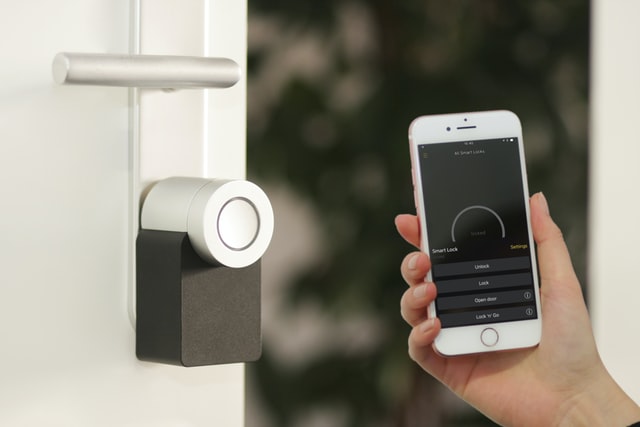
These days, technology is working on your side to help you stay one step ahead of those nefarious individuals seeking to snatch your valuables. There are new and increasingly affordable options in smart home security that will help you integrate a home security routine into your life, and here we’ll go over some of the main options.
Doorbell Cameras – A very telling poll from a local news channel revealed that 100%, that’s right, 100%, of burglars knocked on the front door of the homes they were targeting before breaking in. Someone being at home is a strong deterrent; knocking and then pretending to have the wrong house if someone answers the door is an excellent way of testing the waters.
Doorbell cameras have the dual advantage of showing a potential thief that they are being monitored, a deterrent in itself, as well as providing you footage of the person if they knock, find no one home, and proceed to break in.
Smart Apps – If you don’t want to commit to a full home security system, there are many options available for cameras that detect motion and record to a server, pinging the user when movement is detected. This way, you don’t need to have an alarm company monitoring your home, and you can also have the peace of mind of knowing that you’ll be alerted when there’s any action.
Monitored Home Security Systems – Companies like Ring and ADT security systems, which began with a single product, are now expanding to more full-service home security, including live monitoring. While this service is more along the lines of a traditional home security solution, innovative companies are putting a tech-forward spin on it by offering live monitoring only to the specific cameras that you choose when you want it. Instead of having a fully-monitored system as soon as you arm it on the keypad – there is no keypad. You use the app to tell the company when you’re home and what cameras you want to be monitored – a futuristic solution that works with your lifestyle on the fly.
Smart Home Systems – Installing smart home systems such as Google Home, Alexa, or Apple HomePod is not only convenient for when you’re at home, but it can also help with your home security when you’re away (or just don’t feel like getting out of bed). Smart lights, from Innr for example, mean that you can turn your lights on and off from an app on your phone.
An excellent deterrent against burglars is having sound and lights on in your home, but a savvy burglar will know to check and see if there are patterns in when the lights go on and off, meaning that they’re on a timer and not that someone is necessarily home. The advantage of a smart home system is that you can control these actions sporadically, meaning that there is no pattern where potential burglars can’t be sure if you’re home or not.
Security cameras and your insurance
Having security cameras installed in your home can potentially save you money on your home insurance premiums
. Many insurance companies offer discounts for home security systems, including security cameras, as they can help prevent theft and damage to your property. The specific discount and amount may vary depending on your insurance provider and the type of security system you have installed.
It’s important to note that not all security cameras may be eligible for discounts, and some insurance companies may have specific requirements or guidelines for what qualifies as a home security system. It’s always a good idea to check with your insurance provider to see if they offer any discounts for security systems and what specific requirements they may have. By doing so, you can potentially save money on insurance while also increasing the security and protection of your home.
Traditional security solutions
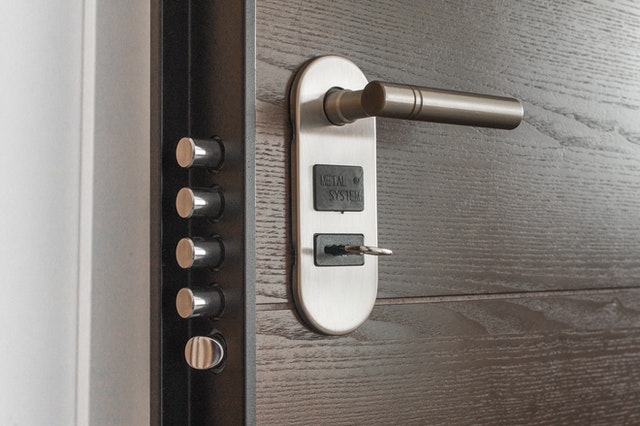
Traditional home security is still around for a reason! Despite many recent innovations in keeping your home safe, traditional monitored home security systems work well because they provide a real person watching out for your home when you can’t. They can discern between a real threat and a false alarm and are there to ensure that the appropriate emergency services are dispatched if need be.
Additionally, there are some security hacks that you can try on your own to create disincentives or deterrents for potential thieves.
Secure windows and sliding patio doors with a broom handle. Or an old hockey stick, piece of Dowling, or anything that fits in the track of the window or door to block it from sliding open.
If you live in a city and don’t happen to have any of those things lying around, head to your closest Home Depot. They’ll be able to direct you to the right product and even cut it for you on the spot. (Just make sure you’ve measured the space you need it for before you go.)
Install wireless contact sensors. These inexpensive products are not connected to an alarm company and essentially just make a loud noise when the connection breaks. The upside is that they’re inexpensive; the downside is that if you’re not home, your neighbors will have to either come and check it out for you if it goes off or tolerate the noise until the battery runs out, and if you are home, you’ll have to muster up the courage to check and see what caused the noise! (Or, hide and call the police, nobody will judge you.)
Put your lights and TV or radio on an automatic timer. You don’t need a fancy smart home system to have your lights, TV, or radio come on automatically on a timer. These inexpensive devices are simple to use and provide some activity in your home whether you’re there or not.
Outdoor security solutions
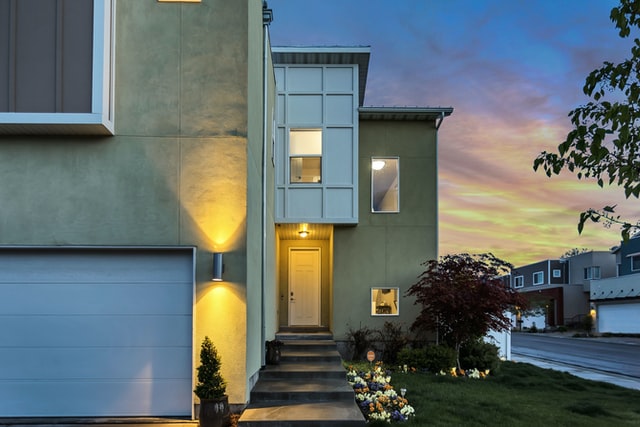
Thieves begin by assessing your home from the outside, and this is where your first opportunities lie to deter them.
Know your weak points – walk around your house and look to see where the likely points are that a potential burglar could target. Out-of-the-way windows and side doors are prime targets, especially if those are obscured from being seen by neighbors or passers-by.
Bring in the pros – Local check-in police will often happily come by and do a home security check in more suburban or rural areas. They’ll give you their pro opinions on where your vulnerabilities are, which is valuable because unless you’re a burglar yourself, there are likely areas that the average person wouldn’t think about.
Plan ahead with landscaping – When you spot areas of your home that could be points of entry for a break-in, think about how you can use your landscaping to obscure them or make them less desirable entry points.
Use motion lights – Next to noise in your home and a visible security system, motion lights are the next best deterrent for potential thieves. Shedding bright, sudden light on them is the last thing they want, and that simple action could be the thing that saves you from being the victim of a break-in.
What happens if a burglar breaks into my house?
Even with the best preparation, it’s not always possible to prevent burglaries. So what should you do if you come home to find that your house has been broken into?
If a burglar breaks into your house, it’s important to prioritize your safety above all else. Here are some steps you should take:
- Stay calm: While it can be frightening to have a burglar in your home, it’s important to stay calm and avoid confronting them. Your safety should be your top priority.
- Call the police: As soon as you can, call the police to report the break-in. Provide them with as much information as you can, including your location and any details about the burglar.
- Stay hidden: If you can safely do so, try to find a secure place to hide until the police arrive. If you can’t find a safe place to hide, try to stay as quiet as possible and avoid drawing attention to yourself.
- Don’t confront the burglar: Avoid confronting the burglar, as this could put you in danger. If the burglar approaches you, try to remain calm and comply with their demands.
- Document any damages: After the burglar leaves, document any damages to your property and belongings. This can be helpful when filing a police report and making a home insurance claim.
Simple steps are all it takes to avoid being a statistic. You don’t necessarily need a huge budget and high tech to keep your valuables and your home safe – follow our easy tips and advice, and you’ll be well on your way to staying safe and secure.
